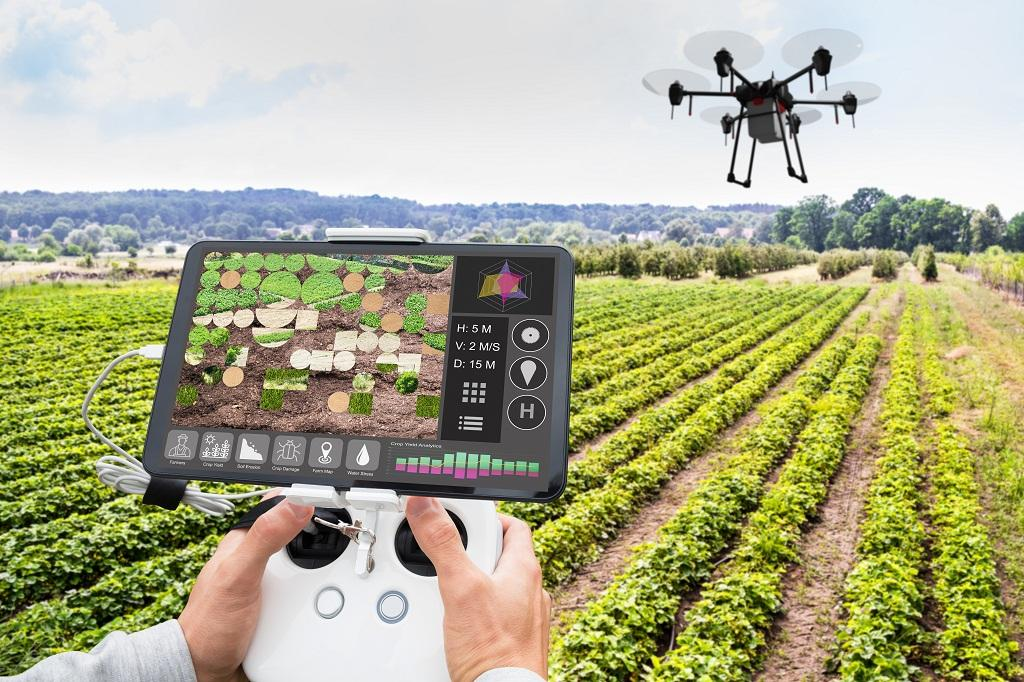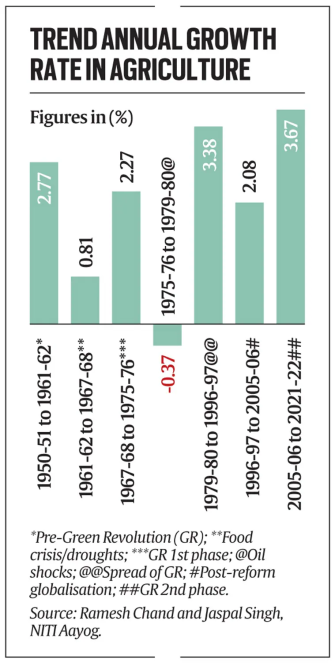Description

Copyright infringement not intended
Picture Courtesy: eos.com/blog
Context: Advancements in technology have played a crucial role in Indian agriculture, enabling increased productivity despite limitations in traditional factors of production like land, water, labour, and energy.
Details
- The dynamics of productivity have significantly changed over time. Initially, agricultural growth relied heavily on factors like land expansion and labour. However, the scenario has transformed remarkably due to the influence of technological advancements.
- In the past, the growth of agriculture was primarily driven by the extension of cultivated land. Yet, the advent of technological factors such as genetics, crop nutrition, crop protection, and agronomic interventions has shifted the focus towards enhancing productivity rather than merely increasing inputs.
- The development of high-yielding crop varieties, the introduction of fertilizers with enriched nutrient content, and innovations in crop protection methods have all played pivotal roles in amplifying agricultural output. These advancements have enabled greater yields without a proportional increase in land, labour, or water resources.
- The contemporary phase of agricultural development owes much to the widespread adoption of productivity-boosting technologies. This adoption has been accompanied by the simultaneous advancement of essential infrastructure like rural roads, electricity supply, irrigation systems, and communication networks.

Factors of Production
- Land: Historically, agricultural growth was tied to the expansion of cultivable land. However, the increase in agricultural land has been limited over time.
- Water: Agricultural productivity heavily relies on water availability, both through rainfall and irrigation systems.
- Labour and Energy: Traditionally, human labour and bullocks were essential for farming activities. Before modern machinery, bullocks powered tasks like ploughing and irrigation.
Factors of Technology
- Genetics: The development of high-yielding varieties, particularly in wheat and rice during the Green Revolution, significantly boosted production. Dwarf varieties were engineered to be more responsive to fertilizers and resistant to lodging.
- Crop Nutrition: Chemical fertilizers with higher nitrogen-phosphorus-potassium content revolutionized crop nutrition, enhancing yields significantly.
- Crop Protection: Technologies like pesticides and herbicides helped protect crops from pests, diseases, and weeds, ensuring higher yield gains.
- Agronomic Interventions: Mechanization, including tractors and various implements, not only replaced bullocks but also introduced advanced techniques like deep tillage and precision farming. Innovations like drip irrigation and intercropping optimize water usage and land productivity.
Impact of Technological Factors
- Increased Productivity: Technological advancements have elevated the aggregate production function in agriculture. Instead of merely increasing inputs for higher outputs, these advancements have led to increased productivity per unit of input.
- Efficiency Gains: The trend shows a remarkable rise in agricultural productivity despite marginal growth in the net sown area, indicating technology's role in maximizing output from limited resources.
- Growth Rates: Estimates suggest that the growth in agricultural production in recent years has been primarily due to technological factors rather than traditional inputs like land expansion or increased labour.
Recent Trends
- The upward trend in agricultural growth rates, especially since the early 2000s, highlights the sustained impact of technological advancements. Improved infrastructure and increased adoption of modern technologies have further propelled this growth.

Conclusion
- The evolution of technology in agriculture—from seed development to mechanization and precision farming—has enabled Indian agriculture to generate higher yields and increased productivity from the same or even fewer inputs. This shift from traditional factors of production to technological innovations has been pivotal in sustaining and boosting agricultural growth in the country.
Must Read Articles:
Transform agriculture with tech for job creation: https://www.iasgyan.in/daily-current-affairs/lewis-model
KRISHI 24/7: https://www.iasgyan.in/daily-current-affairs/krishi-247
Artificial Intelligence In Agriculture: https://www.iasgyan.in/daily-current-affairs/artificial-intelligence-in-agriculture-19
|
PRACTICE QUESTION
Q. What are the major challenges faced by Indian farmers in adopting sustainable agricultural practices, and what initiatives have been implemented to enhance agricultural productivity while ensuring environmental conservation?
|














